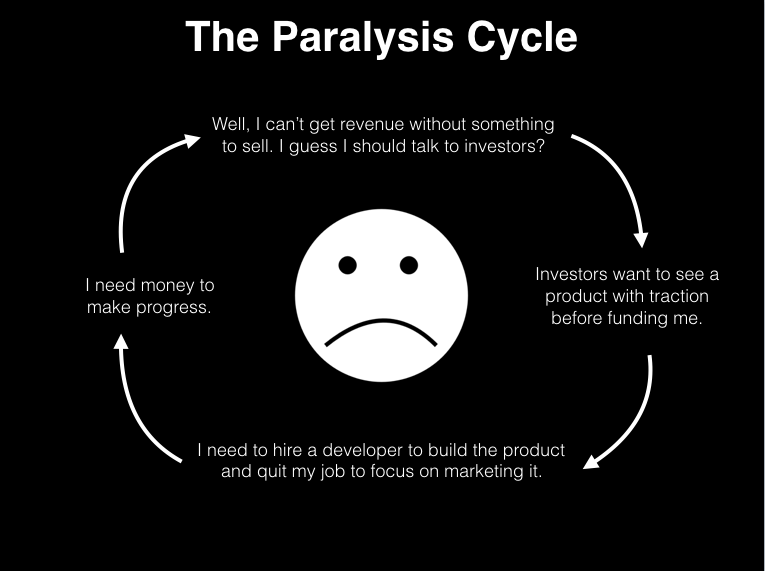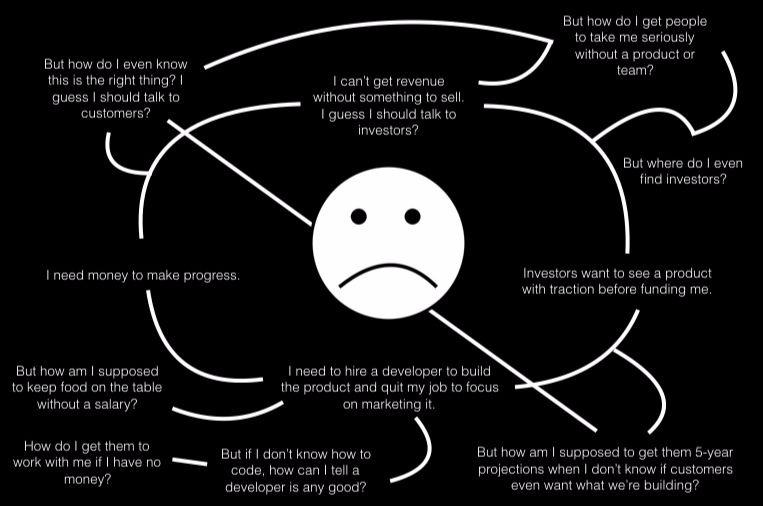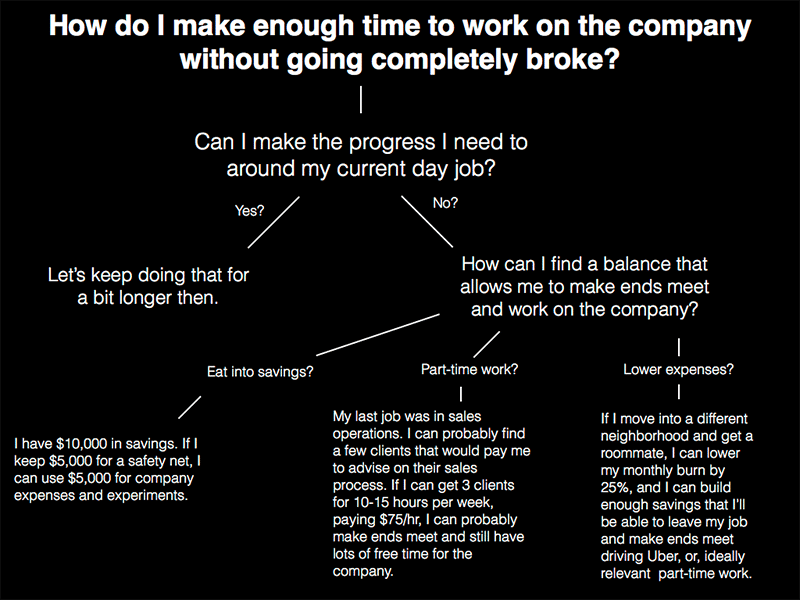The Art of Hacking Chicken-Egg Problems
Episode #1 of the course The crash course guide to starting up by Alex Schiff
Hi all,
Welcome to the first lesson of “The Crash Course Guide to Starting Up.” Over the next ten emails, I hope to give you a solid foundation in what it takes to get a new technology startup off the ground—mostly through framework thinking and crappy graphics. I’ll primarily be drawing from my experience building Fetchnotes, a mobile productivity startup I founded in 2011 and sold in 2015.
For my first lesson, we’ll be discussing what I believe is at the heart of creating pretty much any new venture of material weight, be it a technology startup, nonprofit, political campaign, or local small business: chicken-egg problems. The most critical skill you need to possess as an entrepreneur is the ability to solve problems that are multi-sided, self-reinforcing, and just plain hard.
Here’s a common example:

But it’s definitely not the only one:
• I need more customers bringing in revenue to invest in building new features. But I need new features to attract new customers.
• I need a developer to build out my idea. But I don’t know how to interview developers.
• I need to show traction and leverage to negotiate better deals or permission from large vendors. But I need them to cut me a better deal to get off the ground.
Every time you try to make progress in one area, it’s thwarted by your lack of progress in another, which itself is dependent on making progress on the first.
Solving the Paralysis Cycle
The first step to solving the Paralysis Cycle is simply accepting that this is now your reality. They do not go away with more traction, experience, or time.
The second step is learning to admit to yourself when these things are excuses. You don’t really need a developer to build out your idea—it’s just easier than learning how to code yourself. You don’t really need to forego a salary in order to focus on the company—it’s just easier than working nights and weekends or picking up boring part-time work to make ends meet. There are always alternative options; they might just be really hard.
The final step is learning how to break down complex, interconnected problems into a series of independent, concrete tasks. The Paralysis Cycle actually tends to look a lot more like this:

There is simply no way to approach this without first untangling the web. From the above, we can see the problem breaking down into a series of questions:
1. How do I make enough time to work on the company and not go completely broke?
2. How do I make enough progress to unlock investor or customer funding, given the resources I have?
3. How do I get my foot in the door with customers and investors to start getting the information I need before I have a real product to discuss?
4. How do I hire people without having experience in what they do and no real resources to compensate them?
These are four very concrete, specific questions, without the dependencies of the others complicating the picture. From here, you can start triaging solutions.
Taking Question 1 as an example:

Perhaps you lower your personal expenses enough to save up for startup costs, or do part-time work to fund targets, or some hybrid of the two. Either way, with a small cushion of cash and some free time, Questions 2-4 start to become more solvable. Maybe you can:
• Figure out creative ways to “spoof” the product or service with existing tools and test demand or usage (for example, the first version of Fetchnotes was a phone number that routed to my phone where people could text notes, and I organized them in a Google Doc according to different categories).
• Spend $200 on gift cards to offer people in your customer demographic to let you talk to them for 30 minutes.
• Start building informal, organic connections with key players in your industry: commenting on their blog posts, replying to their tweets, trying to meet them at events, etc.
• Pay a developer you trust a small amount to help you recruit and vet a technical co-founder.
Over the next nine emails, I’ll try to give you as many tools as possible to start answering these questions for yourself. Tomorrow, the quest for product-market-fit begins!
Onward!
Alex
Recommended book
Switch: How to Change Things When Change Is Hard by Chip Heath and Dan Heath
Share with friends

